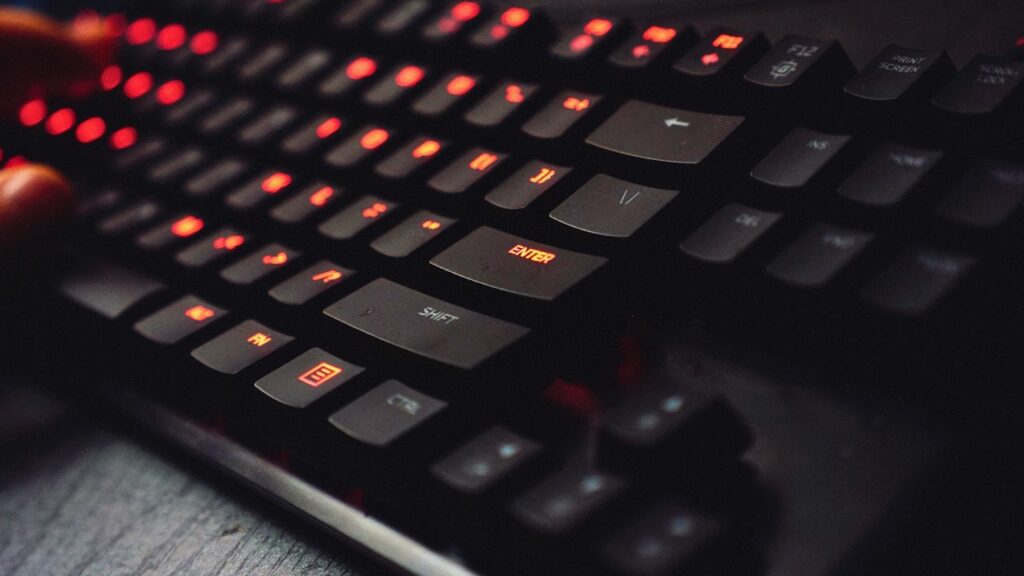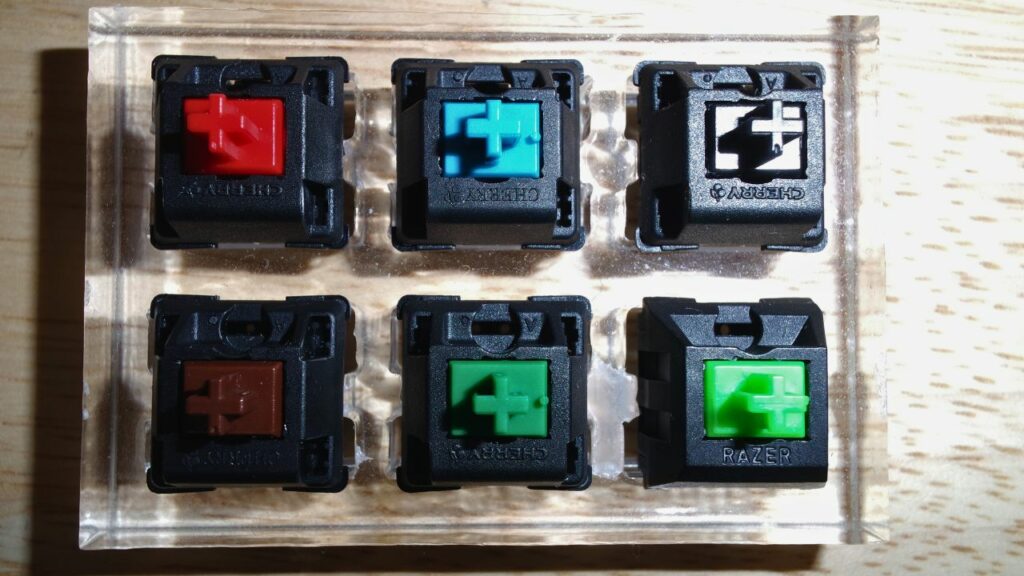
From a light click to a hearty clack, the sensation of pressing a keyboard key is a familiar pleasure to many of us. In an era where technology consistently innovates, keyboards have become more than just a tool, evolving to meet specific needs and tastes. One such innovation is the Hall Effect switches keyboard, a design that combines durability, tactile satisfaction, and precision into a single typing experience.
The Magnetic Revolution
The genius behind Hall Effect keyboards lies in the way they use magnetic fields. Instead of relying on physical contacts, these ingenious devices use a completely different method. When a key is pressed, a magnet attached to the key’s stem moves closer to a sensor embedded in the board, altering the magnetic field. This change triggers the sensor to send an electrical signal to your computer.
Sounds pretty straight-forward, right? But the beauty lies in the details. It’s like opening up a Pandora’s box of keyboard science, adding an entirely new layer to the eternal questions like, “Does keyboard size affect my typing speed?” or “Should I choose optical switches or mechanical ones?”
Advantages of Hall Effect Keyboards
Hall Effect switches offer numerous benefits over traditional keyboard designs, most notably in terms of durability and reliability. They are often utilized in high-stakes industries, such as aerospace and military applications, precisely because of these qualities.
Being contactless, these keyboards are resistant to common issues affecting other types of switches. Environmental factors like dust, water, or dirt do not hamper their operational performance, ensuring a longer lifespan for the switches. This resilience makes Hall Effect keyboards a worthwhile investment despite their higher price tag compared to standard rubber dome keyboards.
Furthermore, Hall Effect keyboards require less force to press a key, producing a unique tactile feel that users appreciate. The lack of physical contact between the sensor and switch also prevents “bouncing,” a common issue with mechanical switches that results in jittery inputs. The overall experience is smoother, offering a sense of effortlessness in every keystroke.
Hall Effect Switches: A Historical Perspective
Hall Effect switches were first introduced to the keyboard market back in 1968 by Honeywell, utilizing what were then significantly larger Microswitch switches. Since then, the technology has come a long way. Thanks to economies of scale and the rise of small keyboard makers, Hall Effect sensors are now relatively inexpensive and widely available.
Hall Effect and Modern Keyboard Design
Hall Effect technology not only offers improved durability and a unique typing feel, but it also opens up new possibilities in keyboard design. One example of this is the Wooting’s Lekker Switch. Designed with analog input and simplicity in mind, the Lekker Switch enables small keyboard makers to integrate Hall Effect technology into their designs effortlessly.
Through a custom firmware, the Lekker Switch translates analog inputs into useable digital data. This innovation allows for unique keyboard features, such as incremental movement control and multiple key actions at different points of a keystroke. It’s an exciting advancement that makes typing not just a task, but a nuanced and engaging experience.
Hall Effect vs. The Field: How Does It Compare?
When you’re exploring the world of keyboards, it’s impossible not to notice the varied range of switches available. Each comes with its own unique feel and performance characteristics. Hall Effect switches offer a distinct experience that stands out from the crowd, but how do they stack up against popular mechanical or optical switches? Let’s dive into a comparison to find out.
Hall Effect vs. Mechanical Switches

Mechanical switches, such as Cherry MX or Gateron, are often characterized by their distinct tactile feedback and audible ‘click’.
Tactile Feel and Actuation Force
When compared to mechanical switches, Hall Effect switches require less actuation force. This means they can be pressed down with less pressure, leading to less fatigue during long typing or gaming sessions. While mechanical switches also offer tactile feedback, the Hall Effect provides a smoother, more consistent feel due to its contactless design.
Noise Level
Mechanical switches tend to produce more noise due to their moving parts. This can range from a soft click to a pronounced clack, depending on the switch type. On the other hand, Hall Effect keyboards are known for their quieter operation, which could be a deciding factor if you’re working in a shared space or prefer a less noisy environment.
Typing Experience
The overall typing experience differs significantly between the two. Mechanical keyboards offer a more traditional, tactile experience that many typists and gamers enjoy. In contrast, Hall Effect keyboards present a unique, fluid experience that merges the best of durability and smoothness. If you’re looking to try something different from the conventional mechanical feel, the Hall Effect switch may be worth considering.
Hall Effect vs. Optical Switches
Optical switches operate using a beam of light that is interrupted when a key is pressed, triggering a keystroke.
Tactile Feel and Activation Force
Similar to Hall Effect switches, optical switches also offer a smooth keystroke experience due to their contactless design. However, the overall tactile feel varies depending on the specific design of the optical switch. In terms of actuation force, both types can be similar, though this is often customizable with optical switches.
Noise Level
The noise level for optical switches can vary widely, similar to mechanical switches. While some models are designed to emulate the clicky sound of a mechanical switch, others aim for a quieter typing experience. Hall Effect switches, in general, lean towards the quieter side.
Typing Experience
Typing on an optical keyboard can feel similar to a mechanical keyboard, but with a faster actuation time due to the speed of light used in the key actuation process. However, Hall Effect keyboards still provide a uniquely fluid and smooth typing experience that sets them apart.
In conclusion, Hall Effect keyboards bring to the table a unique combo of longevity, consistent tactile feedback, and a quieter ambiance. They might be just the right alternative for you if traditional mechanical or optical switches aren’t cutting it. And if you’re still on the fence, remember, there’s a whole world of switch types waiting for your discovery.
Frequently Asked Questions
Q1: What is a Hall Effect keyboard? A: A Hall Effect keyboard uses a magnetic field to detect when a key is pressed. This technology allows for a smoother and more consistent typing experience, and it’s renowned for its longevity and reliability.
Q2: How do Hall Effect switches compare to mechanical switches? A: Hall Effect switches require less actuation force compared to mechanical switches and provide a smoother tactile feel. They also generally operate more quietly.
Q3: How do Hall Effect switches compare to optical switches? A: Both Hall Effect and optical switches offer a smooth keystroke experience due to their contactless design. However, Hall Effect switches generally offer a quieter operation and a unique, fluid typing experience that sets them apart.
Q4: Are Hall Effect keyboards expensive? A: Yes, Hall Effect keyboards are typically more expensive than rubber dome or certain mechanical keyboards due to their superior durability and unique technology. However, many users believe the investment is worth it for the improved typing experience and longevity.
Q5: Where can I find more information about different types of keyboard switches? A: I’d recommend checking out our comprehensive guide to the best keyboard switches—it’s got you covered!
The Bottom Line
Choosing a keyboard is a very personal decision that should take into account your needs, preferences, and the demands of your work or hobbies. If longevity, resilience, and an exquisite tactile feel rank high on your list, a Hall Effect keyboard could be just the upgrade you’re looking for.
Whether you’re a gamer needing quick, responsive keys, a coder spending hours typing away, or a writer crafting the next great novel, there’s a Hall Effect keyboard out there waiting to enhance your typing experience.